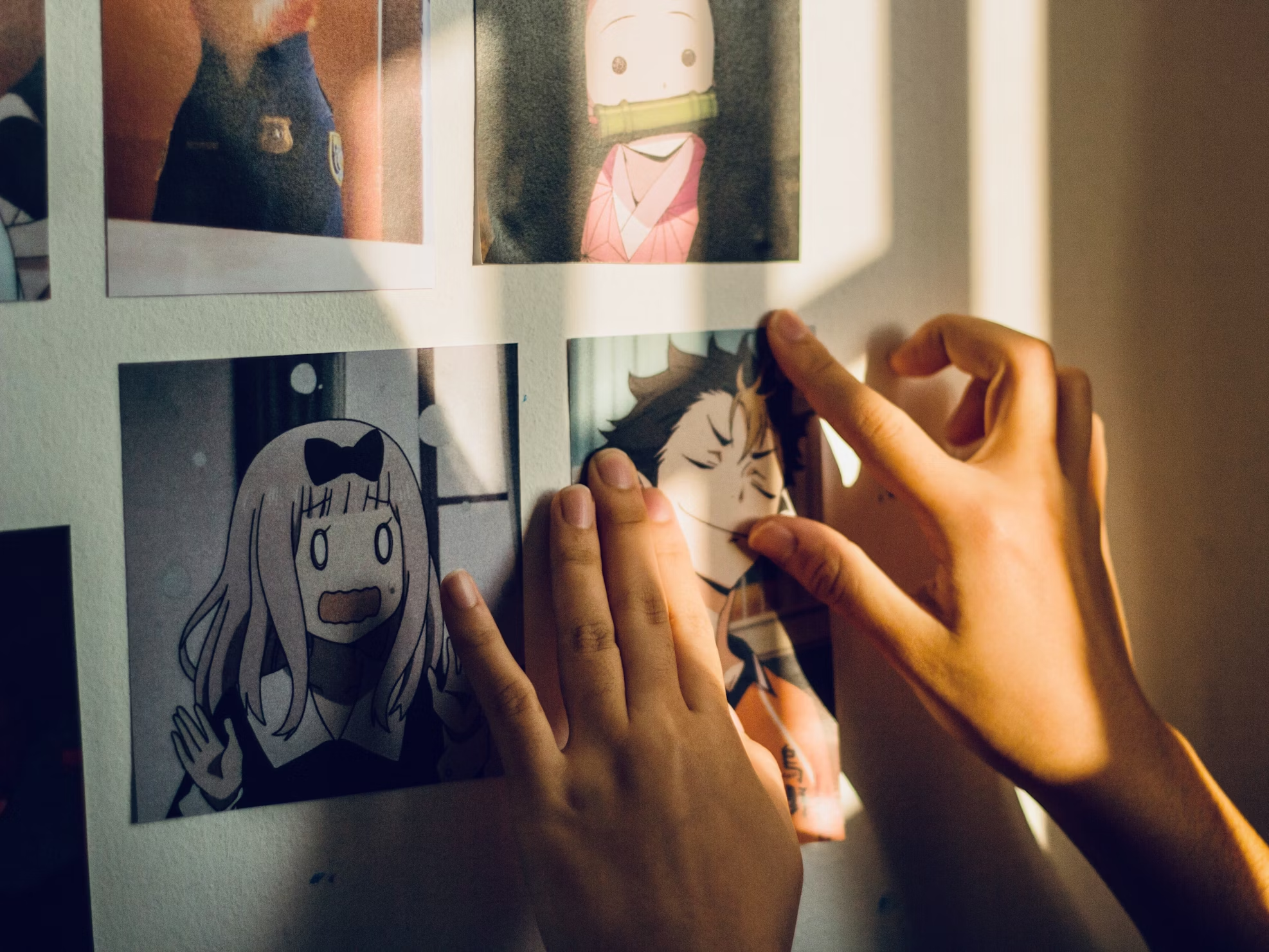The Evolution of Anime: From Humble Beginnings to Global Phenomenon

Anime, a term derived from the English word “animation,” is now synonymous with a unique style of animated entertainment that has captured the hearts of millions worldwide. With its roots deeply embedded in Japanese culture, anime has evolved over the decades to become a global phenomenon. Here, we will explore the rich history of anime, tracing its origins, key milestones, and its rise to international fame.
The Origins of Anime: Early 20th Century

The history of anime begins in the early 20th century, with the first known example of Japanese animation dating back to 1917. This short, silent film, titled Namakura Gatana (The Dull Sword), was created by Jun’ichi Kōuchi and is often considered one of the earliest anime works. During this period, Japanese animators were heavily influenced by Western animation techniques, particularly those from the United States and Europe. These early works were primarily short films, often used as propaganda or educational tools.
In the 1920s and 1930s, Japanese animators began experimenting with different styles and techniques. However, the industry faced significant challenges, including limited resources and competition from Western films. Despite these obstacles, animation continued to develop in Japan, laying the groundwork for what would become a flourishing industry.
Post-War Resurgence: 1940s and 1950s

The aftermath of World War II marked a turning point for anime. Japan’s defeat and the subsequent American occupation led to a cultural exchange that significantly influenced the development of anime. The introduction of American cartoons and comics, such as Disney’s Snow White and the Seven Dwarfs (1937), inspired Japanese animators to create their own feature-length films.
In 1948, the founding of Toei Animation, one of Japan’s most prominent animation studios, marked a significant milestone. Toei’s first major success came with Hakujaden (The Tale of the White Serpent) in 1958, which is often considered the first color anime feature film. This film set the stage for future productions and established Toei as a key player in the anime industry.
The Birth of Modern Anime: 1960s

The 1960s saw the emergence of modern anime, characterized by a distinct art style and storytelling approach. This era also witnessed the rise of Osamu Tezuka, often referred to as the “God of Manga” and a pioneering figure in the anime world. Tezuka’s work, particularly his manga series Tetsuwan Atom (Astro Boy), played a crucial role in shaping the anime industry.
In 1963, Astro Boy became the first Japanese animated television series to gain widespread popularity both in Japan and abroad. The success of Astro Boy paved the way for other influential anime series, such as Gigantor (Tetsujin 28-go) and Kimba the White Lion (Jungle Taitei). These series not only popularized anime in Japan but also introduced it to international audiences.
The Golden Age of Anime: 1970s and 1980s

The 1970s and 1980s are often referred to as the “Golden Age of Anime.” During this period, anime experienced significant growth in both quality and quantity, with the introduction of various genres and iconic series.
One of the most influential genres to emerge during this time was the mecha genre, which features giant robots and mechanical suits. The 1970s saw the release of groundbreaking series like Mazinger Z (1972) and Mobile Suit Gundam (1979). Mobile Suit Gundam, in particular, redefined the mecha genre by introducing more complex characters and political themes, influencing countless future anime series.
Another notable development during this era was the rise of anime films. Hayao Miyazaki, a legendary director and co-founder of Studio Ghibli, made his directorial debut with The Castle of Cagliostro (1979). His subsequent films, such as Nausicaä of the Valley of the Wind (1984) and Laputa: Castle in the Sky (1986), set new standards for anime films and established Miyazaki as one of the most influential figures in the industry.
The 1980s also saw the emergence of cyberpunk and dystopian themes in anime, with films like Akira (1988) and Ghost in the Shell (1995) gaining critical acclaim for their complex narratives and stunning visuals. These films not only pushed the boundaries of animation but also introduced anime to a global audience.
Anime Goes Global: 1990s and 2000s

The 1990s marked a significant shift in the global perception of anime. With the advent of the internet and the growing popularity of Japanese pop culture, anime began to reach a wider audience outside of Japan. Several key series and films played a pivotal role in this expansion.
One of the most influential anime series of the 1990s was Neon Genesis Evangelion (1995), directed by Hideaki Anno. This series, with its complex psychological themes and deconstruction of the mecha genre, gained a massive following and became a cultural phenomenon.
The 1990s also saw the international success of Studio Ghibli films, particularly Princess Mononoke (1997) and Spirited Away (2001). Spirited Away became the first anime film to win an Academy Award for Best Animated Feature, solidifying anime’s status as a legitimate form of artistic expression.
The early 2000s witnessed the rise of anime fandoms across the globe, with series like Naruto, Bleach, and One Piece capturing the imaginations of viewers worldwide. The availability of anime through streaming services and fan-subtitled content further fueled its popularity, making it more accessible to international audiences.
The Modern Era: 2010s and Beyond

In the 2010s, anime continued to evolve, embracing new technologies and expanding its reach even further. The rise of streaming platforms like Crunchyroll, Netflix, and Funimation played a crucial role in bringing anime to a global audience. These platforms allowed fans to access a vast library of anime titles, from classic series to the latest releases, with ease.
The modern era of anime is characterized by a diverse range of genres and styles, catering to a broad spectrum of tastes. From the heartwarming slice-of-life series like Your Lie in April to the dark and gritty Attack on Titan, anime continues to push the boundaries of storytelling and animation.
One of the most significant trends in recent years has been the increasing collaboration between Japanese and international creators. For example, Castlevania, an American-produced anime series based on the popular video game franchise, received widespread acclaim for its high-quality animation and engaging storyline.
Moreover, anime’s influence can be seen in various aspects of global pop culture, from fashion and music to video games and cinema. The success of films like Demon Slayer: Mugen Train (2020), which became the highest-grossing anime film of all time, is a testament to anime’s enduring appeal and cultural significance.
The Future of Anime

As we look to the future, the possibilities for anime are endless. With advancements in animation technology and the continued globalization of the industry, anime is poised to reach even greater heights. The integration of virtual reality (VR) and augmented reality (AR) into anime experiences could revolutionize the way we consume and interact with animated content.
Additionally, the growing popularity of anime conventions and fan communities around the world highlights the deep connection that fans have with this unique art form. As anime continues to inspire new generations of creators and fans alike, its influence will undoubtedly continue to shape the entertainment landscape for years to come.

The history of anime is a rich tapestry of creativity, innovation, and cultural exchange. From its humble beginnings in the early 20th century to its status as a global phenomenon, anime has come a long way. Its evolution reflects the changing tastes and sensibilities of audiences, as well as the boundless potential of animation as a medium. As we celebrate the legacy of anime and look forward to its future, one thing is certain: anime will continue to captivate and inspire audiences around the world, just as it has for over a century.
